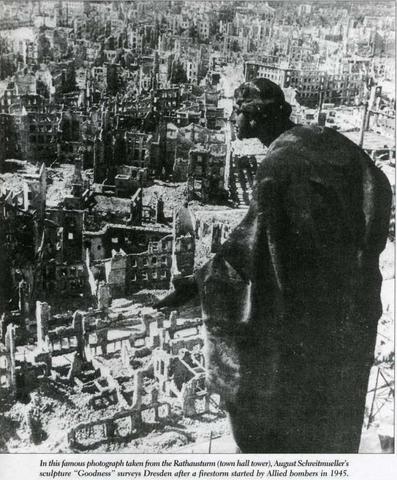The End of the Bloodiest War in History: Part I

On May 7, 1945 the Germans finally surrendered to the Allies, with the surrender executed at 11:01 p.m. the following day, officially ending the Second World War in Europe. Although statistics cannot possibly capture the scope of human suffering endured during the War, it remains vitally important today to understand the cost in lives created by Hitler’s quest for Lebensraum (including within Germany - with a sample of this destruction evident in the picture of Dresden accompanying this post). As such, over the next few weeks we will be publishing a series of posts detailing the human cost of the Second World War in Europe. Today we summarize a portion of the suffering endured by the people of Western and Southeastern Europe.
In terms of numbers killed, and in a relative sense, the Anglo-American alliance suffered the least, but had nevertheless sustained tremendous losses that are almost inconceivable to imagine happening today. For instance, in Northwest Europe alone, between D-Day and VE (Victory Europe) Day 488,080 Allied soldiers (including 356,660 Americans) had been killed, wounded, or were missing. The dead included 109,820 Americans, and 42,180 British, Canadian and Polish soldiers. Italy lost 400,000 combatant dead during the fighting on all fronts in the War – including against the Soviet Union and Germany. For its part, and only looking at its casualties on the 1944-45 Western Front the Wehrmacht suffered 80,819 dead, 265,526 wounded, 490,624 missing, and 2,057,138 captured.
Overall, Britain suffered 60,595 civilian dead during the War, mostly from German bombing; London was in ruins, having lost three and a half million homes to German bombing. Moreover the War had so devastated the British economy that food rationing, instituted after the War, did not end until 1954. Britain also endured 264,443 military deaths on all fronts – including against Japan – while the United States suffered approximately 400,000 killed during the War; also on all fronts.
The fighting between the Anglo-American alliance and Germany had also left Western and Southern Europe in ruin. Even worse, their civilian populations had borne the brunt of the death toll in the fighting. France suffered 350,000 dead, was left with only 20% of its pre-war stock of locomotives and one-third its pre-war merchant fleet. The Dutch suffered 204,000 dead and lost 60% of their pre-war canal, rail and road transport. The Norwegians lost 14% of their pre-war capital stock. The Greeks suffered 430,000 dead, lost two thirds of their merchant fleet, endured 1,000 villages destroyed, and lost one-third of their forests. Italy lost 1.2 million of its homes and its economy was in shambles; as late as the 1950’s one quarter of the Italian population lived in poverty. Yugoslavia was in ruins, having suffered the worst of any Western or Southern European country; ten percent of its pre-war population dead (1.4 million people), 50% of its livestock dead, 20% of its homes destroyed, and a third of all industrial wealth gone.
Nevertheless, as bad as these numbers are they pale in comparison to what had happened in parts of Central and Eastern Europe. The topic we will cover next in this series.



Post new comment